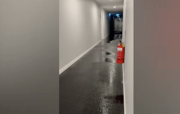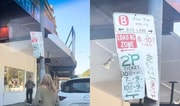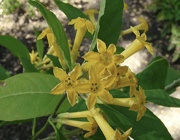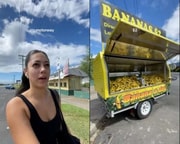You know the cost of war—now your DNA could help bring a soldier home
By
Maan
- Replies 0
Content warning: This story discusses the deaths of Australian soldiers in war.
For almost a century, they were simply names on a monument—sons, brothers and fathers who vanished in a single night of horror.
Now, an army of volunteers is working against time to restore their identities and return them to history.
All it takes is a little DNA and a lot of heart.
Nearly two decades ago, a mass grave was unearthed in France—its silence finally broken by the discovery of more than 200 Australian soldiers buried together after the Battle of Fromelles.
The battle, fought on 19 July 1916, was the first major action on the Western Front for Australian troops.
It was also the most catastrophic: almost 2,000 men were killed in just 24 hours.
The Fromelles Association, a volunteer-led group established in 2014, had been working to identify the remains ever since.
Many of the soldiers were matched early on through unit badges, dog tags and even letters from home that had survived with their owners.
But around 70 soldiers still remained unnamed—unknown to their families, lost to time.
‘But it’s those 70 whose remains haven’t been identified, that’s where DNA comes in and the DNA connection is what we’re really striving for now,’ volunteer Tony Ryan said.
The organisation has narrowed its focus to Queensland men from the 31st Battalion who are still unaccounted-for.
With little more than enlistment records and family lore, volunteers have spent years piecing together family trees.
In some cases, up to 4,000 hours of research have gone into finding a single potential match.
One such connection led them to Betty Petrie from Ayr, south of Townsville.
Volunteers reached out in 2023 with the belief she could be related to Private John Watson, who may lie among the unidentified.
‘I was quite surprised, probably more surprised about the research they’d done to find me,’ Ms Petrie said.
‘But I was only too happy to help get someone else identified.’
Ms Petrie had never heard of a relative being lost at war.
‘My grandmother never broached the subject at all on either side of my family. No one seemed to ever want to speak about war or who went,’ she said.
She has since agreed to submit a DNA sample and is now waiting for the kit to arrive from the UK.
The identification process requires both maternal and paternal DNA to increase the chances of a match.
‘Thousands upon thousands were killed and had no known graves out of that whole Fromelles campaign,’ Mr Ryan said.
His own family, too, may have ties to the mass grave.
After tracing his family tree, Mr Ryan discovered a possible link to Private Ray Jordan, a 31-year-old New South Wales man killed at Fromelles.
‘That was a very emotional thing when you think well, that could be my grandfather’s missing brother,’ he said.
Stories of service don’t end on the battlefield—many continue through the families left behind, still searching for answers.
In some cases, it’s not just about honouring the past but speaking up when that legacy feels overlooked or disrespected today.
One veteran’s powerful reaction to a national decision shows just how deeply these stories still resonate.
Read more: Veteran’s chilling prediction about Australia just came true—here’s why he’s furious

For families still searching for answers, the past may yet speak—if someone is willing to listen.
For almost a century, they were simply names on a monument—sons, brothers and fathers who vanished in a single night of horror.
Now, an army of volunteers is working against time to restore their identities and return them to history.
All it takes is a little DNA and a lot of heart.
Nearly two decades ago, a mass grave was unearthed in France—its silence finally broken by the discovery of more than 200 Australian soldiers buried together after the Battle of Fromelles.
The battle, fought on 19 July 1916, was the first major action on the Western Front for Australian troops.
It was also the most catastrophic: almost 2,000 men were killed in just 24 hours.
The Fromelles Association, a volunteer-led group established in 2014, had been working to identify the remains ever since.
Many of the soldiers were matched early on through unit badges, dog tags and even letters from home that had survived with their owners.
But around 70 soldiers still remained unnamed—unknown to their families, lost to time.
‘But it’s those 70 whose remains haven’t been identified, that’s where DNA comes in and the DNA connection is what we’re really striving for now,’ volunteer Tony Ryan said.
The organisation has narrowed its focus to Queensland men from the 31st Battalion who are still unaccounted-for.
With little more than enlistment records and family lore, volunteers have spent years piecing together family trees.
In some cases, up to 4,000 hours of research have gone into finding a single potential match.
One such connection led them to Betty Petrie from Ayr, south of Townsville.
Volunteers reached out in 2023 with the belief she could be related to Private John Watson, who may lie among the unidentified.
‘I was quite surprised, probably more surprised about the research they’d done to find me,’ Ms Petrie said.
‘But I was only too happy to help get someone else identified.’
Ms Petrie had never heard of a relative being lost at war.
‘My grandmother never broached the subject at all on either side of my family. No one seemed to ever want to speak about war or who went,’ she said.
She has since agreed to submit a DNA sample and is now waiting for the kit to arrive from the UK.
The identification process requires both maternal and paternal DNA to increase the chances of a match.
‘Thousands upon thousands were killed and had no known graves out of that whole Fromelles campaign,’ Mr Ryan said.
His own family, too, may have ties to the mass grave.
After tracing his family tree, Mr Ryan discovered a possible link to Private Ray Jordan, a 31-year-old New South Wales man killed at Fromelles.
‘That was a very emotional thing when you think well, that could be my grandfather’s missing brother,’ he said.
Stories of service don’t end on the battlefield—many continue through the families left behind, still searching for answers.
In some cases, it’s not just about honouring the past but speaking up when that legacy feels overlooked or disrespected today.
One veteran’s powerful reaction to a national decision shows just how deeply these stories still resonate.
Read more: Veteran’s chilling prediction about Australia just came true—here’s why he’s furious
Key Takeaways
- Volunteers are working to identify 70 unnamed Australian soldiers buried in a mass grave in France.
- The grave is linked to the 1916 Battle of Fromelles, one of Australia’s bloodiest military actions.
- Family members, like Betty Petrie, are being contacted to provide DNA samples.
- The Fromelles Association has spent thousands of hours researching family trees to restore the soldiers’ identities.
For families still searching for answers, the past may yet speak—if someone is willing to listen.








